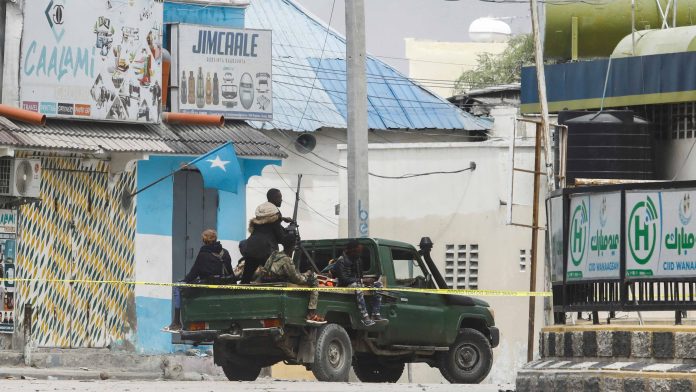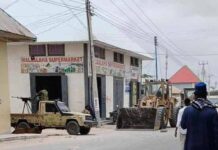MOGADISHU (Somaliguardian) – Somalia’s military announced on Friday that it had reclaimed several villages and towns in the Middle Shabelle region following a sweeping, coordinated assault by Al-Shabaab militants a day earlier.
The army confirmed it had fully restored control over key locations, including El Ali Ahmed, El Baraf, and Mirtaqwo, which had been briefly seized by the Al-Qaeda-linked insurgents during the large-scale attacks.
On Thursday, Al-Shabaab launched simultaneous assaults on multiple towns in the region, including Ali Foldhere, Al Kowther, Daru Ni’ma, El Ali Ahmed, El Baraf and Aadley, and others—areas that had been recaptured from the militants during a government-led offensive launched in mid-2022.
The Somali government claimed in a statement on Thursday that at least 130 militants were killed as security forces and allied militias repelled the attacks.
However, conflicting accounts emerged as Al-Shabaab circulated images on social media purporting to show militants entering El Baraf, Daru Ni’ma, Al Khowther and Mirtaqwo, a town they had not accessed in over a decade.
Witnesses and militant-posted visuals also appeared to contradict the government’s narrative, raising questions about the extent of the insurgents’ initial gains.
By Friday, Somali army officials and allied militias released their own images, asserting that they had regained control of the contested towns. Both sides claimed victory in the latest flare-up of a conflict that has persisted for over two years.
A Mawisley militia leader in El Ali Ahmed recounted the intensity of the attack to state media, describing how militants used suicide car bombs to target a concrete mosque that served as a militia base. He detailed how insurgents, armed with technical vehicles mounted with anti-aircraft guns, attempted to overrun their positions.
Despite running low on ammunition and sustaining casualties, they held their ground overnight until army reinforcements arrived the following day, he added.
Meanwhile, Al-Shabaab released graphic images purportedly showing the bodies of Somali soldiers killed in the fighting, as well as captured military vehicles. The authenticity of these visuals, like those circulated by government forces, could not be independently verified.
The scale of the attacks has raised significant concerns about the resilience of Al-Shabaab, which the Somali government has repeatedly claimed to have weakened. The militants’ ability to orchestrate simultaneous assaults across seven towns in a single day, deploying dozens of technical vehicles and heavy weaponry, has cast doubt on the effectiveness of the government’s counterinsurgency efforts.
The Somali government has yet to provide a comprehensive account of the events, leaving gaps in the narrative. While officials initially insisted that the attacks were repelled, subsequent reports acknowledged that towns had to be retaken—a contradiction that has fueled skepticism about the true outcome of the clashes.
The latest violence underscores the fragility of the gains made by Somali forces and their allies, backed by U.S. and Turkish air support, over the past three years. It also highlights the recurring challenge of holding territory captured from the militants, a persistent issue that has plagued Somalia’s counterinsurgency strategy for over a decade.
As the situation remains fluid, the attacks serve as a stark reminder of Al-Shabaab’s enduring threat and the complexities of securing lasting stability in Somalia.
Contact us: info@somaliguardian.com













